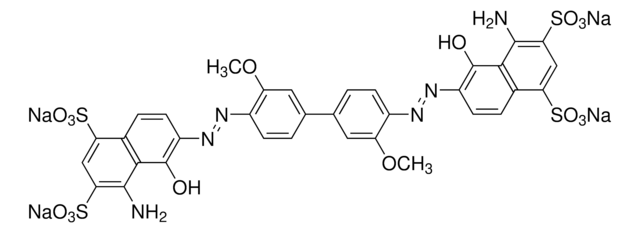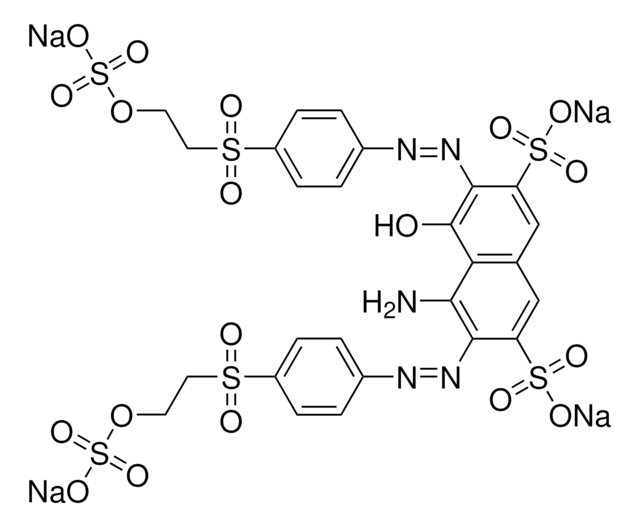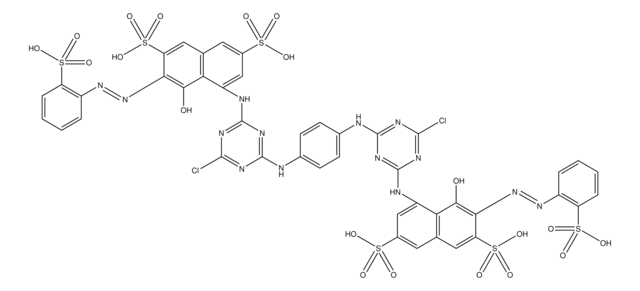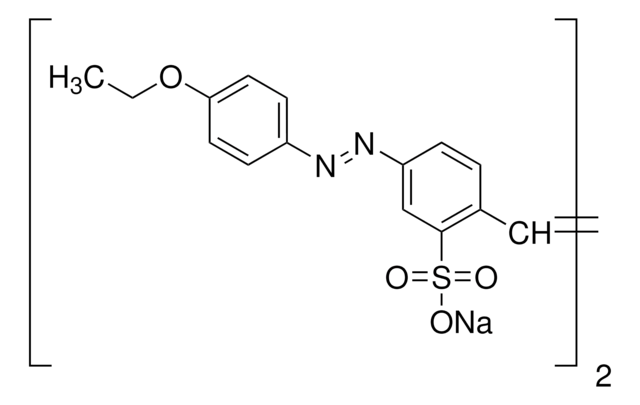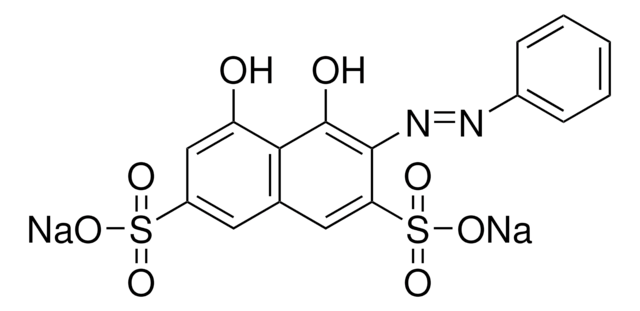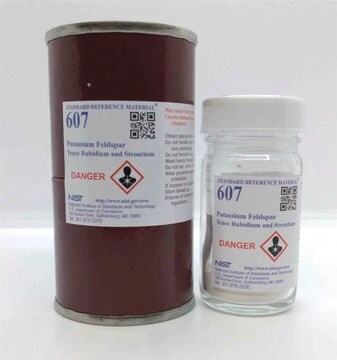D2535
Direct Blue 15
suitable for Histopaque® system, Powder
About This Item
Productos recomendados
product name
Direct Blue 15, suitable for Histopaque® system, suitable for viability studies of collagenase-treated rat liver cells
description
suitable for Histopaque® system
Quality Level
form
powder
composition
Dye content, ~44%
color
dark blue
solubility
water: 10 mg/mL, clear, blue
suitability
suitable for viability studies of collagenase-treated rat liver cells
application(s)
diagnostic assay manufacturing
hematology
histology
storage temp.
room temp
SMILES string
[Na+].[Na+].[Na+].[Na+].COc1cc(ccc1N=Nc2c(O)c3c(N)cc(cc3cc2S([O-])(=O)=O)S([O-])(=O)=O)-c4ccc(N=Nc5c(O)c6c(N)cc(cc6cc5S([O-])(=O)=O)S([O-])(=O)=O)c(OC)c4
InChI
1S/C34H28N6O16S4.4Na/c1-55-25-9-15(3-5-23(25)37-39-31-27(59(49,50)51)11-17-7-19(57(43,44)45)13-21(35)29(17)33(31)41)16-4-6-24(26(10-16)56-2)38-40-32-28(60(52,53)54)12-18-8-20(58(46,47)48)14-22(36)30(18)34(32)42;;;;/h3-14,41-42H,35-36H2,1-2H3,(H,43,44,45)(H,46,47,48)(H,49,50,51)(H,52,53,54);;;;/q;4*+1/p-4
InChI key
OLSOUGWNONTDCK-UHFFFAOYSA-J
¿Está buscando productos similares? Visita Guía de comparación de productos
Application
Legal Information
signalword
Danger
hcodes
Hazard Classifications
Carc. 1B
Storage Class
6.1C - Combustible acute toxic Cat.3 / toxic compounds or compounds which causing chronic effects
wgk_germany
WGK 3
flash_point_f
Not applicable
flash_point_c
Not applicable
Elija entre una de las versiones más recientes:
Certificados de análisis (COA)
¿No ve la versión correcta?
Si necesita una versión concreta, puede buscar un certificado específico por el número de lote.
¿Ya tiene este producto?
Encuentre la documentación para los productos que ha comprado recientemente en la Biblioteca de documentos.
Los clientes también vieron
Nuestro equipo de científicos tiene experiencia en todas las áreas de investigación: Ciencias de la vida, Ciencia de los materiales, Síntesis química, Cromatografía, Analítica y muchas otras.
Póngase en contacto con el Servicio técnico


